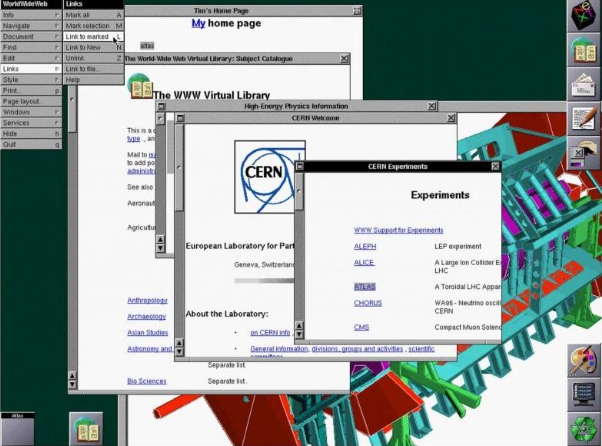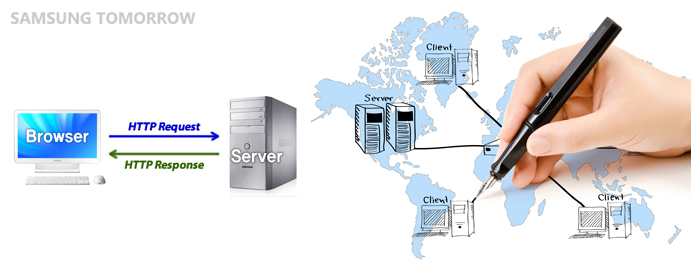Soohong Daniel Park, on board the Board of W3C (Part 1)
on July 18, 2014
Soohong Daniel Park, Senior Researcher at the Software Center of Samsung Electronics, was elected as Advisory Board member of the World Wide Web Consortium (W3C). As one of the nine Advisory Board participants of the W3C, Park is responsible for conducting various research activities regarding Web Standards as well as attending regular meetings.
Recently, Samsung Electronics has been active on the Internet, specifically Internet of Things (IoT), which it announced that it established the Open Interconnect Consortium (OIC) and joined forces with the Thread group as well. Regarding these Samsung’s recent actions, what would Park’s involvement in the W3C possibly mean? Before we go onto Park’s story, here is some background information on W3C and Web Standards to help your understanding.
W3C, Web, and Web Standards
W3C (World Wide Web Consortium)
W3C is an international community established in 1994 having 385 members (as of July 2014) including corporations, university laboratories, and governmental institutions engaged in the IT software field. According to W3C’s official website, its primary activity is to develop Web Standards – interoperable technologies such as specifications, guidelines, software, and tools – to lead the Web to its full potential. It does not have a single physical headquarters, however, there are four institutions that ‘host’ W3C: MIT (in Cambridge, MA, USA), ERCIM (in Sophia-Antipolis, France), Keio University (near Tokyo, Japan), and Beihang University (in Beijing, China).
▲Official Video of the W3C
(*Video might be displayed differently depending on the web browser.)
Birth of the Web
The founder of W3C is Tim Berners-Lee, a British computer scientist, who is also known as the inventor of the Web. When Berners-Lee worked as a CERN (European Organization for Nuclear Research) employee in 1989, he invented the first Web and coined the term “World Wide Web.”
▲Screenshot of the original web browser in 1993 (Source: CERN)
The Web was originally conceived and developed to share information between scientists in universities and institutes. In 1993, CERN put the World Wide Web software in the public domain. It made the next release available with an open license, allowing the web to flourish.
| *Note: The Web and the Internet |
Many people use the terms Web and Internet interchangeably, but the two terms are not the same.
The Internet is a networking infrastructure. It connects millions of computers together globally, forming a network in which any computer can communicate with any other computer as long as they are both connected to the Internet. In Contrast, the Web (aka. World Wide Web, abbreviated as WWW) is a way of accessing information over the medium of the Internet. It is an information-sharing model that is built on top of the Internet. The Web utilizes web browsers such as Internet Explorer or Chrome, to access web documents called web pages that are linked to each other via hyperlinks. Web documents also contain graphics, sounds, text and video.
In short, the Web is one of the ways that information can be disseminated over the Internet.(The Internet is also used for e-mail, instant messaging, and file transfer.) Via Internet, one can access the web. The Web enabled the spread of information over the Internet through an easy-to-use and flexible format. It thus played an important role in popularizing the use of the Internet.
(Source: Webopedia, Wikipedia)
Web Standards
After finishing the first web project in 1990, Tim Berners-Lee was to combine the hypertext with the Internet. He had repeatedly suggested a marriage between the two technologies but when no one took up his invitation, he finally assumed the project himself. In the process, he developed three essential technologies:
• HTML (HyperText Markup Language): HTML is the standard markup language used to create web pages. HTML is written in the form of HTML elements consisting of tags enclosed in angle brackets (like <html>).
▲An example of Source Codes written with HTML tags (left) and the Result Page created
• URL (Uniform Resource Locator): URL (aka. ‘web address,’ particularly when used with HTTP) is a specific character string that constitutes a reference to a resource. “http://global.samsungtomorow.com/?p=38804” is an example.
▲An example of URL and its structure
• HTTP (HyperText Transfer Protocol): The HTTP is an application protocol to exchange or transfer hypertext. It functions as a request-response protocol in the client-server computing model. (For example, a web browser may be the client and an application running on a computer hosting a web site may be the server.)
▲Simple Diagrams of HTTP (left) and Internet Network
Combined with the existing Internet, other websites were created around the world, adding international standards for HTML and domain names. Since then, Berners-Lee has played an active role in guiding the development of Web Standards such as the markup languages and protocols.
Now that we covered the basics of W3C, Web, and Web Standards, we might be ready to dive into Soohong Daniel Park’s story to be on board the Board of W3C. Since when was he interested in Web Standards and why? And what was the process to be involved in the W3C like? Stay tuned for more stories, we’ll come tell you the things.



